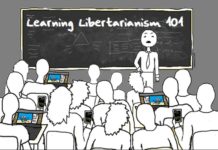Oh, you know what reruns are: re-showing of old TV shows. Some of the original shows were earlier today, others even decades ago! We viewers in the USA LOVE our reruns, from The Andy Griffith Show to The Brady Bunch, and everything in between. Many folks that missed the original airing of TV shows (many were not even born when the shows debuted in their original time slots) fall in love with the reruns. The same is true for political policies and economic trends. Let’s dig.
If you are younger than 60, or simply were not interested in politics and/or economics at the time, you may have no recollection or memory of the late 1970s and early 1980s. Similarly, many of the folks that lived through the Great Depression of the 1930s have passed away, along with their memories. But for those of us geeks that were of that age and interest, we remember vividly the President Jimmy Carter years. Those were times of political upheaval. Gerald Ford served out the remainder of Richard Nixon’s second term—Nixon resigned due to the Watergate scandal. Had he not resigned, Nixon would’ve likely been removed from office by the Senate. 1976 was a get-even election—I doubt any Republican could’ve been elected after the Watergate hearings. So, Jimmy Carter, from Plains, GA, was sworn into office in January, 1977. On his second day in office, President Carter issued a global pardon for all Vietnam War draft evaders. Carter also created the Department of Energy and the Department of Education. But things really got dicey for Carter in 1979. Not only did the Iran Hostage Crisis happen during this time, he also had to endure the Iranian Oil Embargo, which was labeled the Energy Crisis. Newspapers and TV news broadcasts were filled with stories of long lines at gas pumps, and hyper-inflated prices—if the stations HAD gasoline to sell. Many stations simply ran out. For the first time, the price of gasoline exceeded $1.00 per gallon! The economy created a new term: ‘misery index’, the sum of the prime lending rate, inflation rate, and unemployment rate—ALL were in double digit numbers. In 1979, that index exceeded 30!
Most folks only remember recent events, say, in the last 10 years. Since 2012, the prime lending rate has been between 3.25% and 5.00%. Prime lending is considered what very credit-worthy people could borrow money from at an average bank. As of this writing, prime lending rate is estimated at 4.75%–hardly a cause for concern, and well within the 10 year range. In 1979, the prime lending rate was between 11.5% and 15.75%! At least double and triple today’s rates! To put it in perspective, let’s put these numbers to mortgages. A $100,000 loan today, at 6.0% rate, the payment (principle and interest only) would range between $600-$800 per month, depending on a few selected factors (buy-downs, down payments, etc.). That same loan in 1979 would be $1,265 per month (at 15%)! At 12%, one could estimate their house payment by knocking off zeroes: a $100,000 home would cost about $1,000 per month, a $75,000 home would be about $750/month, et cetera. Compare that to current or 1979 rates, and you see the wild variations. To be fair, home prices were considerably less in 1979 than now, but homes were also much smaller, without modern conveniences, such as central HVAC, energy efficient windows, and better appliances. These numbers are only used to compare the effects of interest rate changes.
Inflation is the second factor in the ‘misery index’. Inflation rate is the amount of increase or decrease in buying power of a currency. If inflation is 10%, your dollar one year ago now buys about 90 cents of goods today. The true rate of inflation is a much harder number to nail down, since it is calculated by government functionaries. And what is included in such numbers may bear no resemblance to what average consumers are seeing when shopping. Note that individual goods prices are still greatly impacted by the Supply and Demand of those goods, along with inflation. Separating the components of a price change is rather difficult, if not impossible. The rate of inflation for the last 10 years has been relatively stable, ranging between 1.3% and 2.3%, year over year. Inflation was just reported to be 9.1% in June, the largest year-to-year increase in 40 years! But consumers see different numbers: gas, up 75%; houses up 20-40%; groceries up 10-50%. As most know, supply chains were dramatically impacted by the COVID-19 shutdowns, and while those chains are slowly returning to ‘normal’, they are still a major factor in costs. Most notably is the increase in diesel fuel, which makes shipping by truck more expensive for nearly everything. Of course, governmental policies can and do impact Supply of energy. Suffice it to say, inflation is a very difficult number to arrive at, but large numbers are bad for consumers—especially those on fixed incomes or lower income ranges. Those dollars just do not go as far, and lifestyles can be severely impacted.
Unemployment is the last component in the ‘misery index’. Simply put, it is the percentage of the workforce that is seeking employment but unable to find work at a wage they will accept for the job. This is also a challenging number to arrive at, as some folks voluntarily do not seek employment, most notably retirees and those receiving funds while idle (Welfare, unemployment compensation, etc.). Oddly enough this time around, we have an unusual dynamic: many employers are finding it quite difficult to staff their companies, even with increased wage offerings and signing bonuses. This was almost nonexistent in the 1970s and 80s. Back then, offer an entry-level position (minimum wage), and teenagers and retirees would apply nearly instantly. In any case, the modern dynamic may change big-time with the advent of increased wholesale prices: businesses are paying more for everything, just as consumers are. At some point, hiring practices may slow down due to such costs—if not business closures (with 100% of employees unemployed instantly).
The convergence of the factors of the ‘misery index’ is what leads to its name. Everything costs more, and currency is worth less, coupled with job losses. Heaviest impacts of the price increases are home and rent prices. If you already own your home (or have a fixed rate mortgage), you don’t feel the change. But if you are out looking for a new home, or are renewing an apartment lease, the pinch is quite real. Median home prices are up 20-40% in many areas—that $200,000 home was in your budget, but it is now $250,000! Since many folks are priced out of homes, that puts pressure on the rental market (more Demand than Supply), so those prices are jumping. Consider two roommates, both at minimum wage ($8/hour or so), trying to make it work on their combined bring-home pay (about $2000/month). Rent for their 2BR apartment was $1,000/month—not cheap, but doable with few extras in their lives (leave out car payments, insurance, credit card debt, and such for this discussion). That apartment at lease renewal is now $1,500! Housing cost increases just cut their usable income in half. Many folks are forced to move to less desirable locations, just to be able to afford the rent. Groceries are also now about a third more expensive than this time last year, so painful decisions are in order. So, misery.
So, for you youngsters (or those not interested in such things), this new economy you’re seeing for the very first time is not unique or unprecedented—it is just a re-run of an old economy some of us remember quite well. Yes, it is tough, and it is likely to get tougher. And those living off of fixed incomes or savings are getting gut-punched just as hard as recent entries into wage-earning adulthood. At least back in the first-run of this show (1970s and 1980s), many consumer prices had yet to explode exponentially as they have now: college, houses, automobiles, etc. have outpaced inflation for decades. So, the argument can be made that the current economy is worse than the original, even with prime lending rates at 1/3 of the old.
There are a few things to consider that the old show taught us: first, we all survived it. It wasn’t easy, and tough choices were made. We didn’t go out to dinner as much. We didn’t throw away anything that still had any use at all. We made due with fewer clothes. We traveled less, and stayed home more. We looked for free entertainment wherever possible (TV won out vs going to a movie, etc.). Simply put, we learned how to stretch our dollars, mostly because of necessity. Second, the US changed political leadership, in a big way. Tired of the 4 years of Jimmy Carter’s policies, the voters were heard in the Presidential election of 1980. Ronald Reagan’s victory was the most lopsided Presidential election in our history. And Reagan’s two terms were some of the best economic times for the USA EVER. Time will tell if that political re-run follows the economic re-run we’re currently experiencing.
Thank you for taking the time to read my article! Feel free to add comments (good or bad) in the box below. In addition, there is a link at the bottom of the article to view other items I’ve written at Global Liberty Media. Enjoy!






















